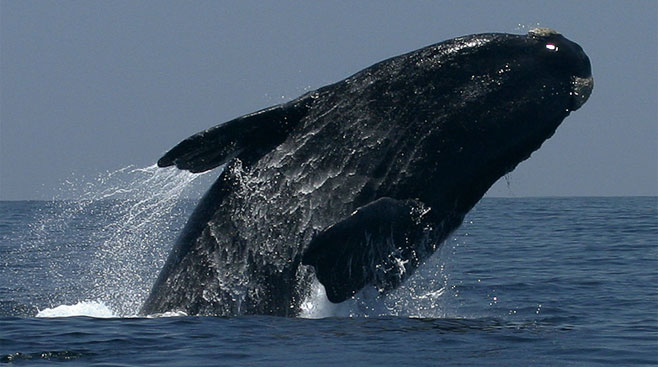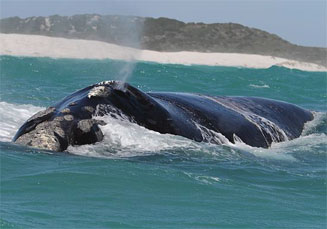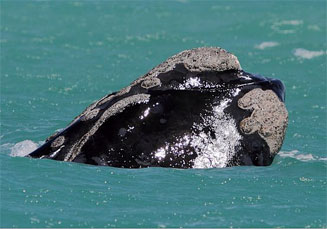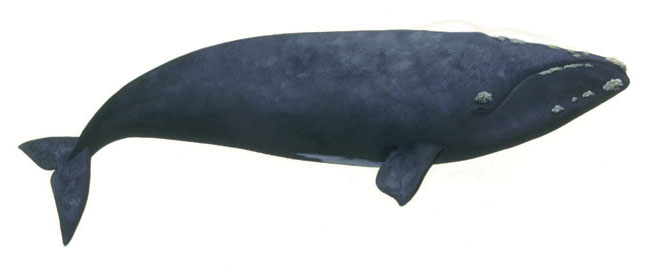|
Eubalaena australis (Southern right whale)
black right whale [English]; suidelike
noordkaper [Afrikaans]
Life
>
Eukaryotes >
Opisthokonta >
Metazoa (animals) > Bilateria > Deuterostomia >
Chordata > Craniata > Vertebrata (vertebrates) >
Gnathostomata (jawed vertebrates) > Teleostomi (teleost
fish) > Osteichthyes (bony fish) > Class:
Sarcopterygii (lobe-finned fish) > Stegocephalia
(terrestrial vertebrates) > Reptiliomorpha > Amniota >
Synapsida (mammal-like reptiles) > Therapsida > Theriodontia
> Cynodontia > Mammalia (mammals)
> Placentalia (placental mammals) >
Laurasiatheria > Ferungulata > Cetartiodactyla (even-toed ungulates and
cetaceans) > Whippomorpha > Cetacea (whales, dolphins and
porpoises) > Family: Balaenidae (right whales)
 |
|
Southern right whale breaching, St Helena Bay,
West Coast, South Africa. [photo Jim Scarff ©] |
 |
 |
|
Southern right whale, Gansbaai, South Africa. [photos Trevor Hardaker ©] |
 |
|
Southern right whale. [Illustration Noel Ashton ©] |
Identification
This is a large baleen whale whose length
averages about 15 metres and whose adult mass is around 54,000
kilograms. The head alone consists of about 25% of the body length,
and it has a long, narrow and highly arched upper jaw. It has no
throat grooves. This animal has no dorsal fin or ridge along itís
back and is smoothly rotund in shape. Southern Right Whales tend to
have definitive callositic (a type of parasite), growths on the
upper parts of their skulls. The patterns made by the callosities on
the skin of the whale are used to help identify individual specimens
from each other. Their colouration is predominantly black with
distinct white patches.
The blow of this animal is characteristic in that it produces 2
distinct spouts in a V-shape about 5 meters high.
Distribution and habitat
They can be seen most prolifically between July and September
along the Cape coast, particularly in
False Bay, the Hermanus area and off the coast opposite de Hoop
Nature Reserve.
Food
They are surface feeders and move at about 4 kilometres per hour
with their mouths open engulfing large quantities of planktonic
crustaceans.
Reproduction
Their social group is normally a family unit that consists of less
than 6 individuals.
Mating occurs in early spring, with a single calf being born after a
gestation period of 9 to 10 months. The calf suckles for a full year
and spends two to three years in close proximity to itís mother.
Text by Derek Ohland
|
